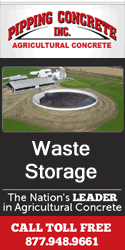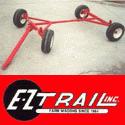 |
 |

|
|
|
Iowa Ag News Headlines |
 |
Managing Athletic Fields Focus of Publications
Iowa Ag Connection - 04/29/2016
Keeping an athletic field both aesthetically pleasing and safe takes planning and care. Managing traffic, interseeding and general maintenance of the field before, during and after the playing season are all important aspects to providing a smooth, even playing
surface.
Iowa State University Extension and Outreach turfgrass specialist Ryan Adams has written a series of five publications designed to help managers keep their fields healthy and safe. All five publications are available online through the Extension Store.
"Field management programs are uniquely different and are directly affected by site-specific practices such as watering, fertilizing, coring, topdressing, drainage, and many others," Adams said. "There are also many non-agronomic factors that ultimately influence
the success and safety of Iowa's playing fields. The annual budget, field manager's expertise, equipment and resources available, and the relationships with coaches, parents, and administrators all have a profound effect on the safety and playing quality of the
facility."
Preventing Compaction on Athletic Fields (HORT 3020) -- Overuse of a field by different groups can cause significant problems. Making sure everyone involved in using the athletic field is on the same page in terms of usage is critical to the field's management
plan. That means there must be constant communication between the coach, band director, administration and field manager.
Tips for Athletic Field Seeding and Irrigation (HORT 3022) -- Seeding as part of an athletic field renovation allows for faster ground coverage and provides better weed control. Keeping existing turf in place and interseeding provides the best chance for that
grass to thrive. Assistance with grass selection for reseeding and irrigation are also covered in the publication.
Managing the Field within the Field (HORT 3046) -- Addressing problem areas within a field is important to the long-term health of that field. Overuse, compaction, poor drainage and weed encroachment can all damage playing surfaces and being able to
identify potential issues and deal with them before they become big problems can help keep a field healthy.
Putting the Field to Bed (HORT 3048) -- One of the most important preparation techniques a field manager uses to get an athletic field ready for competition in the spring is to prepare it for the winter. Not preparing a field for the winter just makes the job of
getting it ready that much harder. This publication discusses how to get a field ready for the winter, highlighting the techniques for fields that will be used in the spring and the fall.
Topdressing Athletic Fields (HORT 3050) -- This publication discusses all aspects of a topdressing program for an athletic field. It discusses how to implement a program and how to modify an existing root zone. The amount of sand required for topdressing is
addressed, as are costs to implement a program.
|
 |


|
 |
|
Copyright © 2024 - Farms.com. All Rights Reserved. |
 |
|